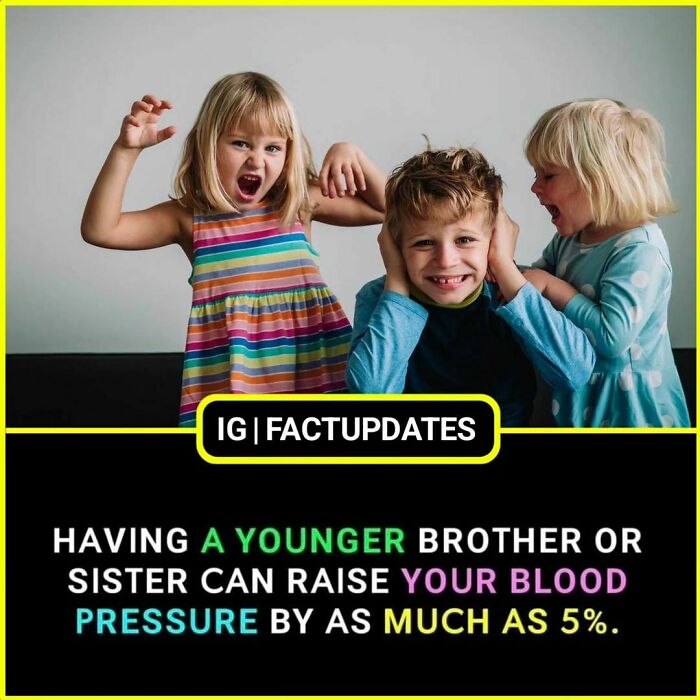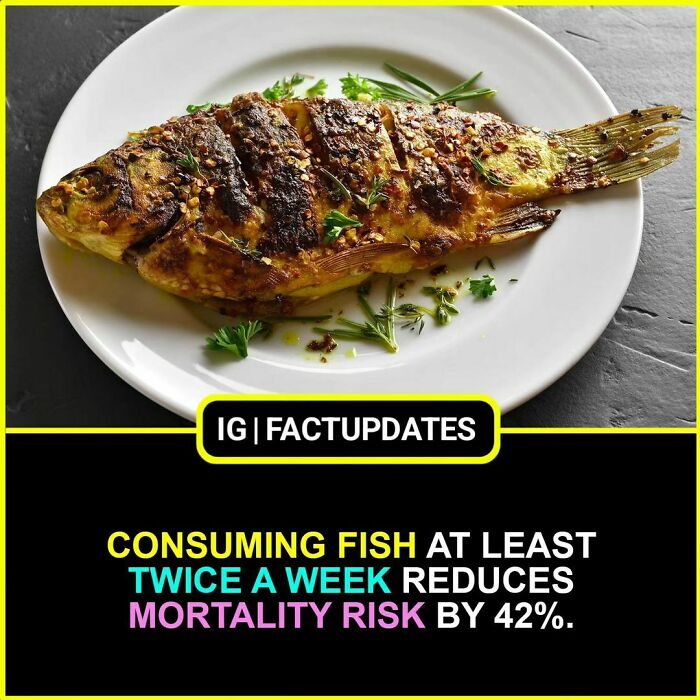“Mondays are tough” is a relatable truth for many, and “laughter is the best medicine” perfectly captures how a good chuckle can brighten our day. But then there are those hard facts, like water boiling at 100°C (212°F), that truly enrich our understanding of the world.
One great place to discover these intriguing facts about all sorts of topics is the Factupdates Instagram account. Today, we've gathered some fascinating tidbits from their page that you won't want to miss Pandas!
#1

Image credits: factupdates
#2

Image credits: factupdates
#3

Image credits: factupdates
In today's world, where we’re constantly bombarded with information, knowing how to differentiate between facts and opinions is a skill we must possess. It's not just about scrolling through your social media or browsing the news—it's about truly understanding what you're reading, hearing, or watching.
By doing so, we are able to make informed decisions in our daily lives. Whether it’s about health, politics, or even simple product review, recognizing facts from opinions helps cut through the noise.
#4

Image credits: factupdates
#5

Image credits: factupdates
#6

Image credits: factupdates
Facts are basically statements that can be proven true or false based on evidence. For example, a fact could be "The Earth orbits the sun." You can usually verify such facts through scientific methods or observation.
Opinions, on the other hand, are personal views or interpretations. An opinion would be something like, "Summer is the best season." But there could be people who believe that winter or monsoon is the best season. Everyone is entitled to their own personal opinion on different matters.
#7

Image credits: factupdates
#8

Image credits: factupdates
#9

Image credits: factupdates
When you know how to distinguish between facts and opinions, it helps you make better decisions and engage in meaningful conversations. Additionally, when you comment on things based on facts, you avoid spreading misinformation.
#10
Having a younger brother can raise blood pressure by 3 to 5.9 per cent, while a younger sister can result in a blood pressure increase of 3.8 per cent.

Image credits: factupdates
#11

Image credits: factupdates
#12

Image credits: factupdates
For instance, let’s say you come across an article about a new diet trend. A fact in that article could be, “This diet helped people lose 10 pounds in one month, as shown in a clinical study." In this case, there is scientific evidence to back up the claim, making it a fact rather than just an opinion.
#13

Image credits: factupdates
#14

Image credits: factupdates
#15

Image credits: factupdates
An opinion, however, could be, “I believe this is the healthiest diet for everyone.” While the study presented evidence, the opinion is a personal belief that might not apply to every individual. So, when you confuse the two, you might start following a diet that might not be beneficial for you at all.
#16

Image credits: factupdates
#17

Image credits: factupdates
#18

Image credits: factupdates
Another example is when you're reading a restaurant review. A fact might be, "The restaurant serves Italian food, and their most popular dish is lasagna." You can verify this by looking at their menu or checking customer orders. However, the reviewer might also say, "This is the best lasagna in town!" which is an opinion based on their personal preference. You might love lasagna, but your idea of the "best" could be very different.
#19

Image credits: factupdates
#20

Image credits: factupdates
#21

Image credits: factupdates
In a study from the University of Illinois Urbana-Champaign, participants from the U.S. were asked to categorize 12 statements about current events as facts or opinions. Shockingly, only 45.7% of participants were able to do so correctly.
This highlights just how tricky it can be for people to distinguish between facts and opinions. Without critical thinking, it’s easy to blur the lines and accept opinions as facts, especially in today’s fast-paced, media-driven world.
#22

Image credits: factupdates
#23

Image credits: factupdates
#24

Image credits: factupdates
Professor Jeffery J. Mondak, who co-authored the study published in the Harvard Kennedy School Misinformation Review, emphasized the importance of this skill: “There’s a huge amount of research on misinformation. But what we found is that, even before we get to the stage of labeling something misinformation, people often have trouble discerning the difference between statements of fact and opinion.”
So, one way to tell a fact from an opinion is by checking for evidence. A fact is typically backed up by data, research, or verifiable sources, while opinions are often personal viewpoints that don’t need proof.
#25

Image credits: factupdates
#26

Image credits: factupdates
#27

Image credits: factupdates
Another tip is to pay attention to the language used. Opinions often include subjective words like "best," "worst," or "I believe." Meanwhile, facts are presented more neutrally, without emotional or judgmental language.
Lastly, you shouldn’t hesitate to question the source of the information. If the source has a personal or commercial interest in swaying you, it’s quite possible that it’s an opinion rather than a fact. So, Pandas, now that you know just how important it is to tell the difference between facts and opinions, which one of these facts caught your attention the most?
#28
The study of 4,165 participants aged 60 years and older in China reveals that people who consumed fish at least “twice a week” compared to “never eat” over the past two years have a significantly reduced risk of mortality (death from any cause) by 42%.

Image credits: factupdates
#29

Image credits: factupdates
#30

Image credits: factupdates







